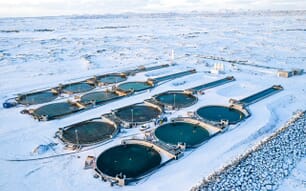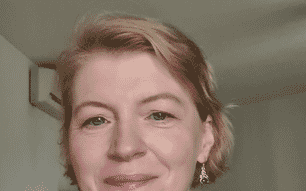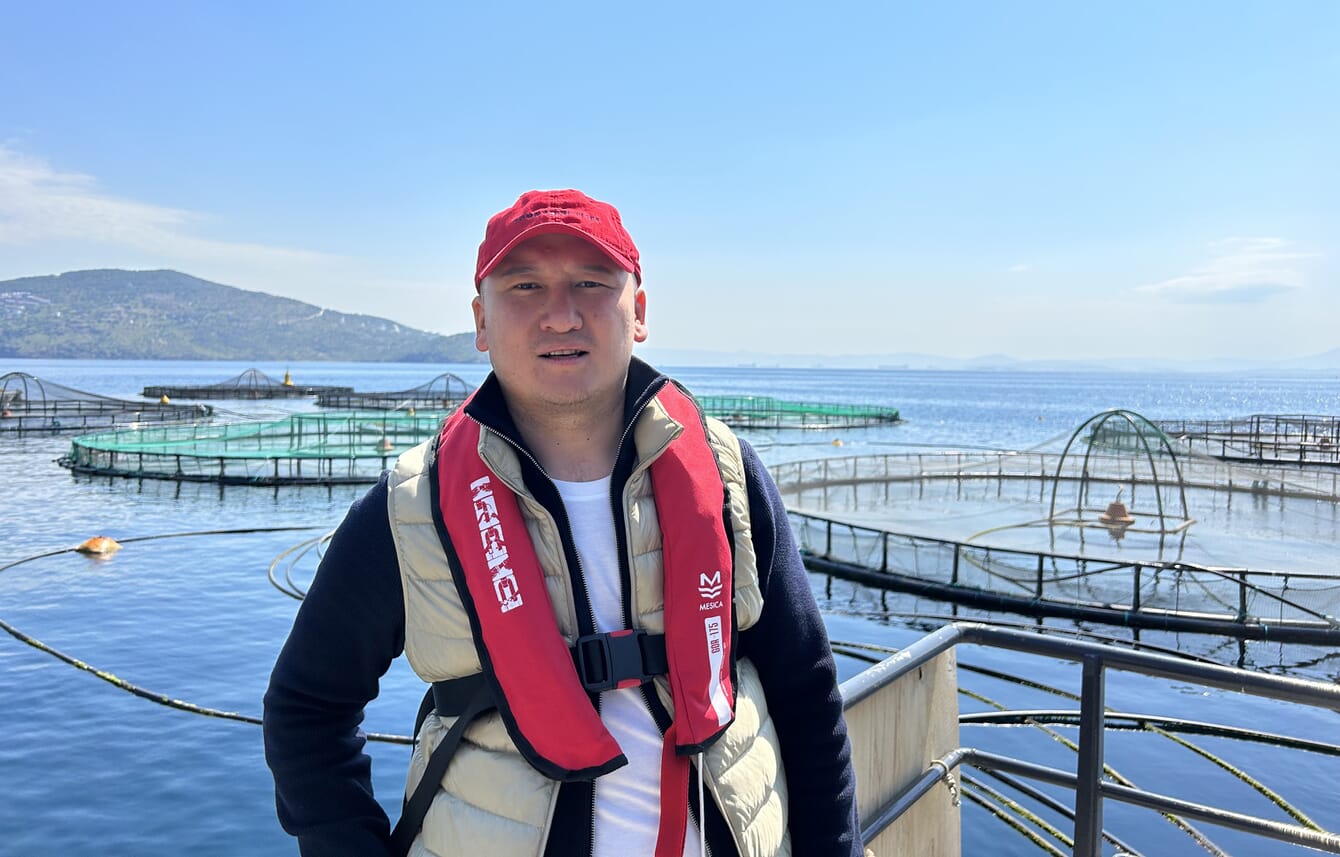
“I’ve got no aquaculture experience and the farming conditions at 1,700 m can be extreme, so people might think I’m crazy. But I like challenges, the fish are growing and the quality is good: when the top fish guys from Europe – from Skretting, from Coppens – come to visit the farm, they say ‘wow’,” reflects Maksutbekuly, looking back on his first 12 months as CEO of FishTech.
FishTech Group, which consists of a number of sister companies, recently established a 12 net pen farm, covering 2.2 km2 on Bestobe Reservoir – a large, man-made, glacier-fed lake in Almaty region, with an average depth of 70 m. The farm currently has the capacity to annually produce up to 600 tonnes of rainbow trout and FishTech is set to complete their first harvest this year.
“We stocked our first batch of 10-25 g trout fingerlings in July 2023 and will grow them up to 2.5 kg in nets that are 22 m in diameter and 12 m deep. The fingerlings are currently sourced from producers locally, but these are under FishTech’s control: we source and supply the eggs, and we manage the feeding and disease programme. A lot of people are surprised that there are big fish farming operations happening in Kazakhstan, but it’s going well,” Maksutbekuly reflects.
Despite its remote location, 70 km from the nearest town, Maksutbekuly has plans to invest in a feed barge with an automated feeding system, as well as underwater sensors and cameras to precisely control the feeding and growth of the fish. To ensure optimal water parameters FishTech has already installed systems to recirculate the water in the pens.
“The water is constantly recirculated, oxygen levels are 12 mg per litre in winter and 9 mg per litre in the summer, while oxygen saturation is 90 percent, which is amazing,” Maksutbekuly observes.

Maksutbekuly is applying his engineering experience to address the challenge of farming trout on a lake that has ice measuring 50 cm thick that, by the spring time when it starts moving, can crush the pens – the team plan to use pumps to create an ice barrier around the pens to act as a shield
Before starting, Maksutbekuly consulted fish farmers in northern parts of Canada and Russia to help inform him of the best ways of dealing with the harsh winter conditions. He also leveraged his network in the American Society of Agricultural Consultants, of which he is a member.
“I’m trying to apply my engineering experience. We have two, quite different, lakes. In one we’ve decided to build the ice around the pens to act as an ice barrier. The ice on the lake is 50 cm thick and, by the spring time when it starts moving, it can crush the pens, so we will use pumps to grow an ice barrier of a few metres thick around the pens to act as a shield,” he explains.
“On the other lake we have similar winter issues but also testing conditions in the summer. Last summer there was a drought in the area, and water levels in the lake dropped, as more water was being used to irrigate surrounding agriculture lands. At one point the lake’s water level fell by 80 percent in a matter of days. We had to do some magic to save the fish,” he adds.
Although Maksutbekuly is currently relying on imported equipment, FishTech’s team are all Kazakhs. However, given the remote location of the lake, their two farming teams take it in fortnightly turns to live on, and work from, a 14-hectare site beside the lake.
“We keep the site secure to reduce the risks posed by two-legged animals,” jokes Maksutbekuly. “We have many migratory birds stopping off at the lake and lots of deer and boar, but the wild animals don’t pose a problem.”
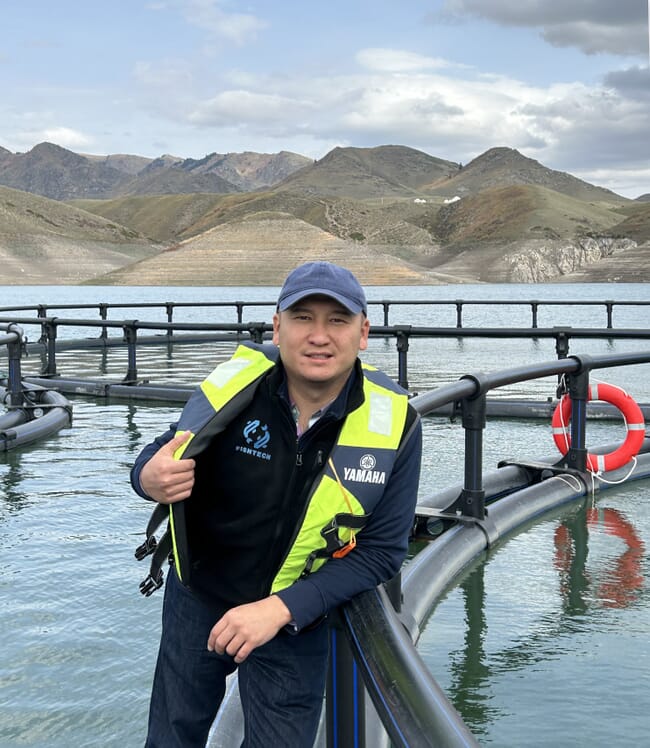
By his own admission, Maksutbekuly has no aquaculture experience and can understand why people might think he's crazy – but he likes challenges, and farming at an altitude of 1700 m in harsh winter conditions is certainly a challenge, although within 12 months he's already making a success of it
Plans for RAS
While the operations have all been self-funded so far, they are currently raising funds to build a $2.5 million RAS hatchery to improve the quality and reliability of their fingerling supply.
“We still need to get a licence for it, but we have an idea of who’s going to build it and we aim to produce 3-4 million eggs and 100-150 tonnes of fingerlings a year,” Maksutbekuly explains.
One of the largest challenges inherent to such a remote farm, in the middle of a vast country with a tiny aquaculture industry, is the lack of support network for aquaculture operators – both in terms of inputs and experienced personnel. As a result, Maksutbekuly hopes to work with the country’s universities to help ensure that a new generation of technically proficient farmers and researchers emerges to help support the growth of the sector.
High grade fish processing facilities are also thin on the ground, so FishTech is planning to establish its own state-of-the-art facility to ensure that its customers – who will mainly be located in Central Asia, Russia, China and the Arab countries – receive their fish in perfect condition.
Maksutbekuly also has ambitions to diversify into different species.
“We started with trout for the pilot, as it’s the most economical and most manageable fish, but I’d prefer to switch to Arctic char, as the market for them is growing. We’re also looking into other cold water salmonids, such as lake whitefish [Coregonus clupeaformis],” he explains.
And he’s also keen to increase the company’s harvest volumes.
“Over time there’s scope to increase production by 10 or even 20 times, but we don’t want to become like some of the fjords in Norway, where overexploitation by the salmon sector has led to environmental and fish health issues, but we hope to gradually expand and potentially reach 5,000-6,000 tonnes per year by 2027-2030,” he explains.
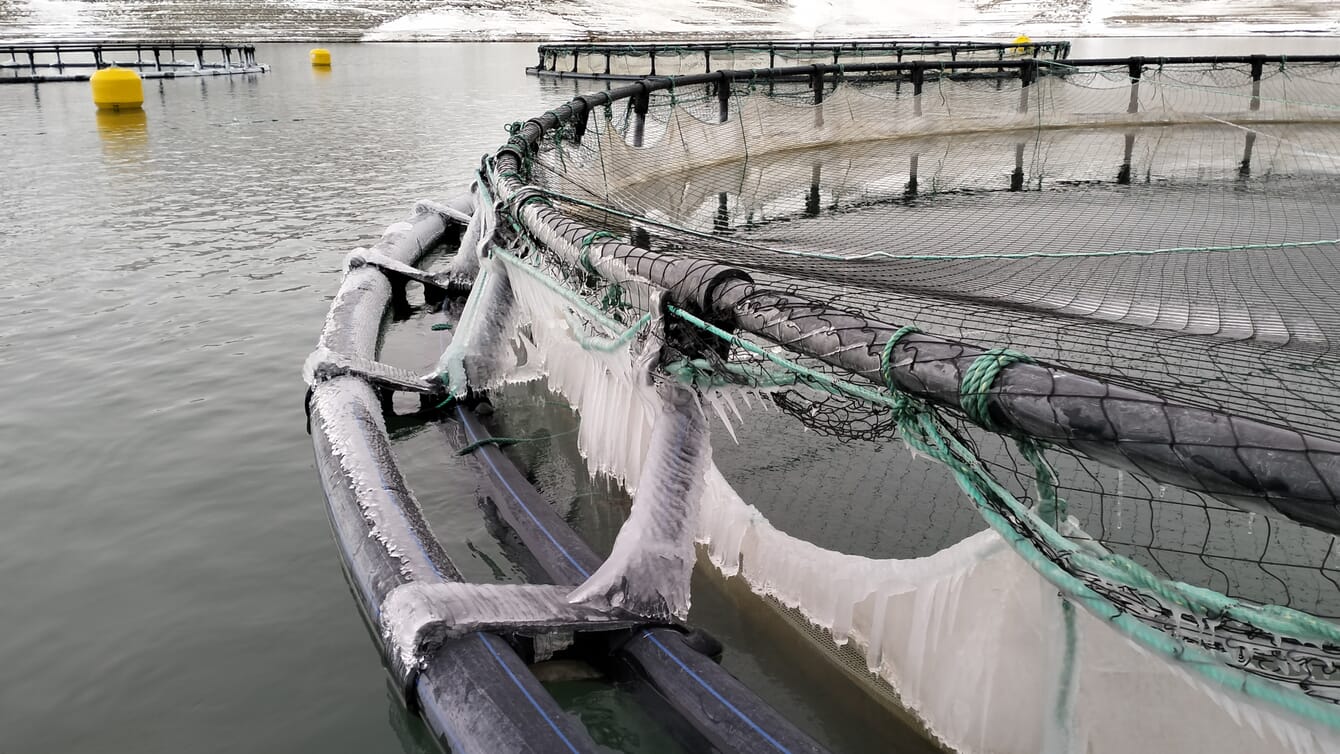
The team stocked their first batch of 10-25 g trout fingerlings in July 2023 and will grow them up to 2.5 kg in nets that are 22 m in diameter and 12 m deep
A novel experience
Maksutbekuly was surprised to land his current role, but hasn’t looked back since.
“I got a call from an IT company asking me to help create, build and run an aquaculture business. These guys had only an idea, they had no experience in aquaculture at all, but I accepted the challenge, and creating an aquaculture cluster,” he reflects.
Despite the challenges, Maksutbekuly says that he’s been able to apply some of the business knowledge he gained as an engineer for the US-based Harris Corporation, as well as his role as CEO of SVAgro, a group of companies that operate fruit production, storage and sales. He has also worked as a consultant for USAID-funded agriculture projects in Central Asia and Afghanistan.
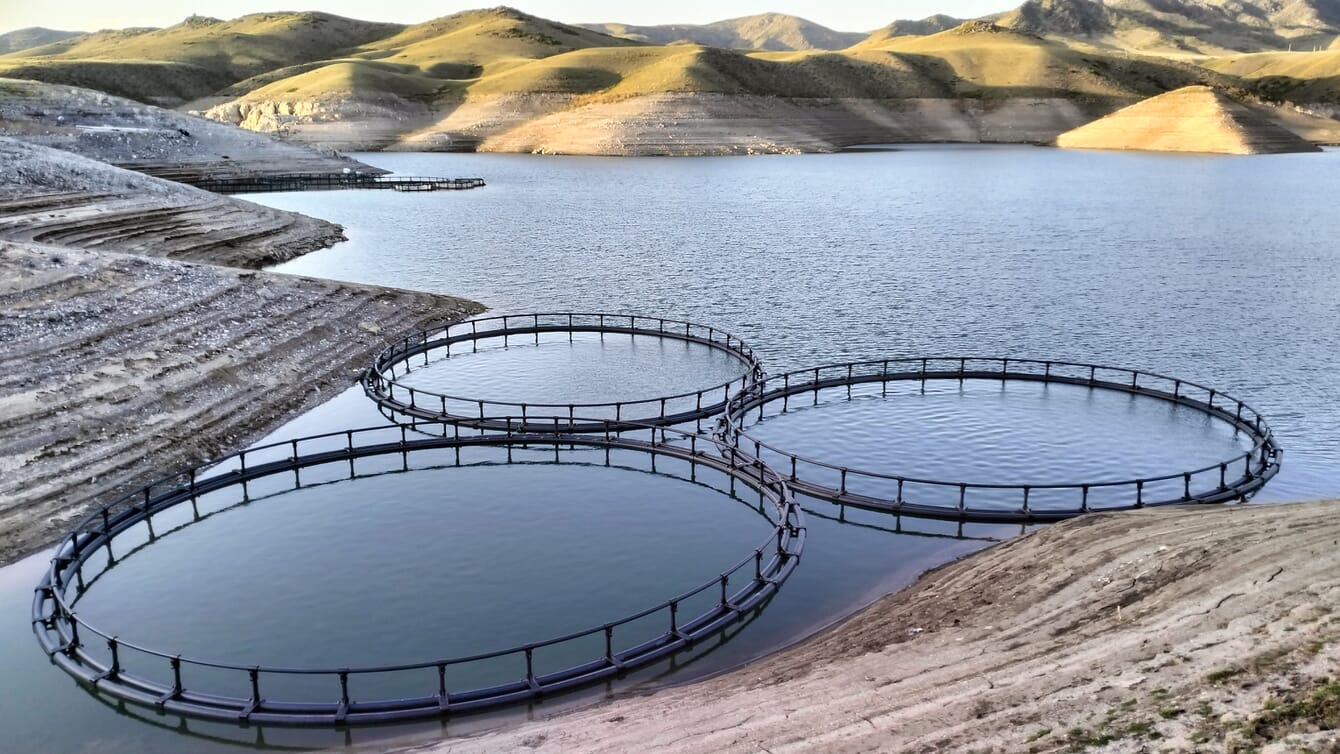
With a good systematic production plan, Maksutbekuly aims to reduce or even eliminate the use of antibiotics in, as he says, "the almost untouched and pristine natural water resources, where we could grow environment-friendly fish."
Although the group has had a promising start, Maksutbekuly is aware that there are still numerous obstacles to overcome.
Key priorities include gaining access to high quality aquafeeds, finding – or training – people to operate the farm effectively, and gaining access to vital vaccines.
“We aim to avoid antibiotics in our produce. We have almost untouched and pristine natural water resources, where we could grow environment-friendly fish. A good systematic production plan can minimise, or even eliminate, the use of antibiotics,” he explains.
However, obtaining vaccines is proving difficult.
“You need to register a vaccine before importing it to Kazakhstan. So we are working with government entities and research institutions to adopt quicker ways to gain access to the newest vaccines,” Maksutbekuly explains.
A catalyst for Kazakh aquaculture
Maksutbekuly would like to build a network of farms across the country, which would all loosely be under FishTech’s control, yet retain a degree of independence. Especially in terms of fish production.
“Their job is to grow the fish, the rest – the transport, the processing, the sourcing of feed and equipment – will be taken care of by another company,” he says.
And he is also fielding requests from aquaculture operators in neighbouring countries who are looking to work with him and bring their own operations up to a similar standard to FishTech’s.
“We might, in time, consider working in other countries, but the next step for us is to set up two or three cage-based farms in Kazakhstan, and establish our own RAS facilities,” Maksutbekuly asserts.
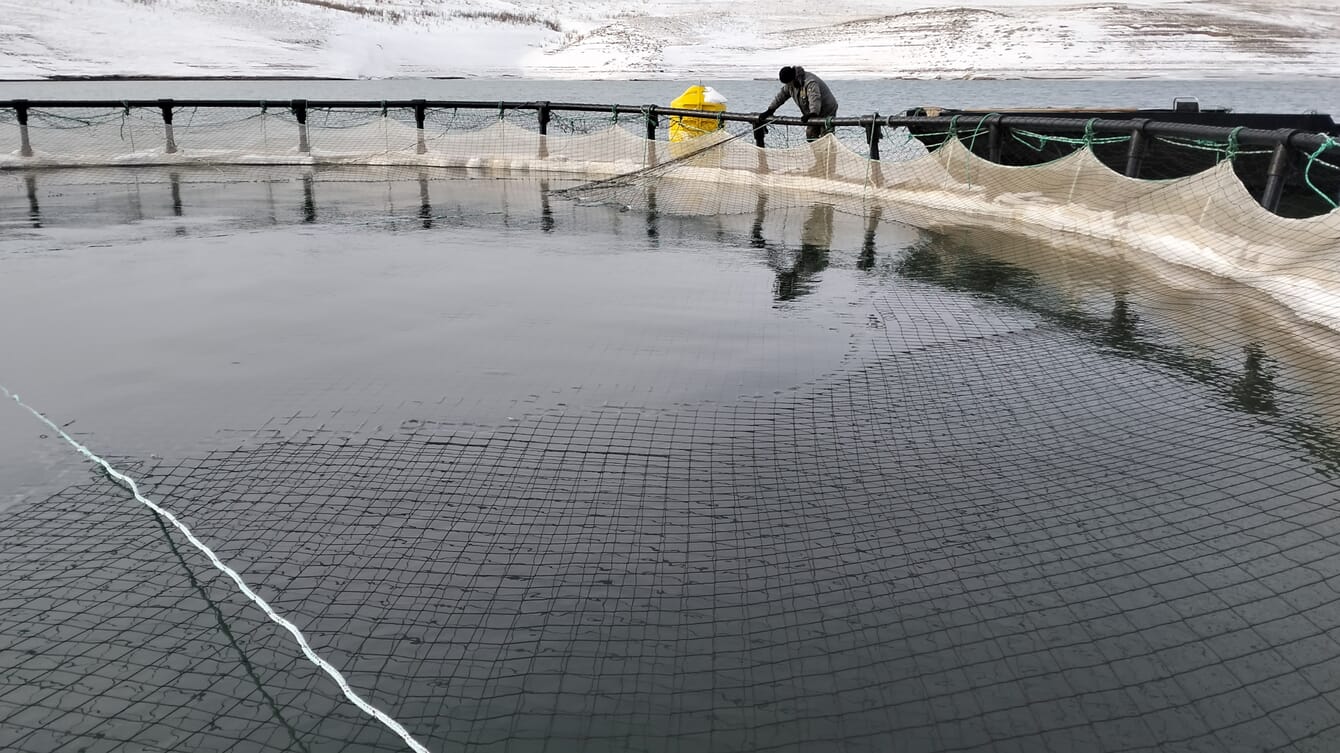
FishTech’s team are all Kazakhs and, given the remote location of the lake, the two farming teams take it in fortnightly turns to live on, and work from, a 14-hectare site beside the lake.
He hopes that FishTech’s success could help to pave the way for the growth of the country’s wider aquaculture sector – which currently produces mainly trout, sturgeon, shrimp, carp and catfish, while there are also a few niche producers of tilapia in regions with hot springs.
“In short run, pikeperch and indigenous salmonids seem to be the products that are most likely to succeed commercially. However, relatively cheap electricity and good quality artesian water sources create ideal conditions for RAS farms that can grow almost any species that fits the demand in high-end domestic and Asian markets,” notes Maksutbekuly.
He adds that the country has set ambitious targets for aquaculture development by 2030, but still has a long way to go before it fulfils its potential.
“Kazakhstan is currently underperforming in freshwater fish output, producing less than 1 percent of the world’s inland aquaculture, despite having 5.14 percent of the total surface area of inland water bodies,” he concludes.


